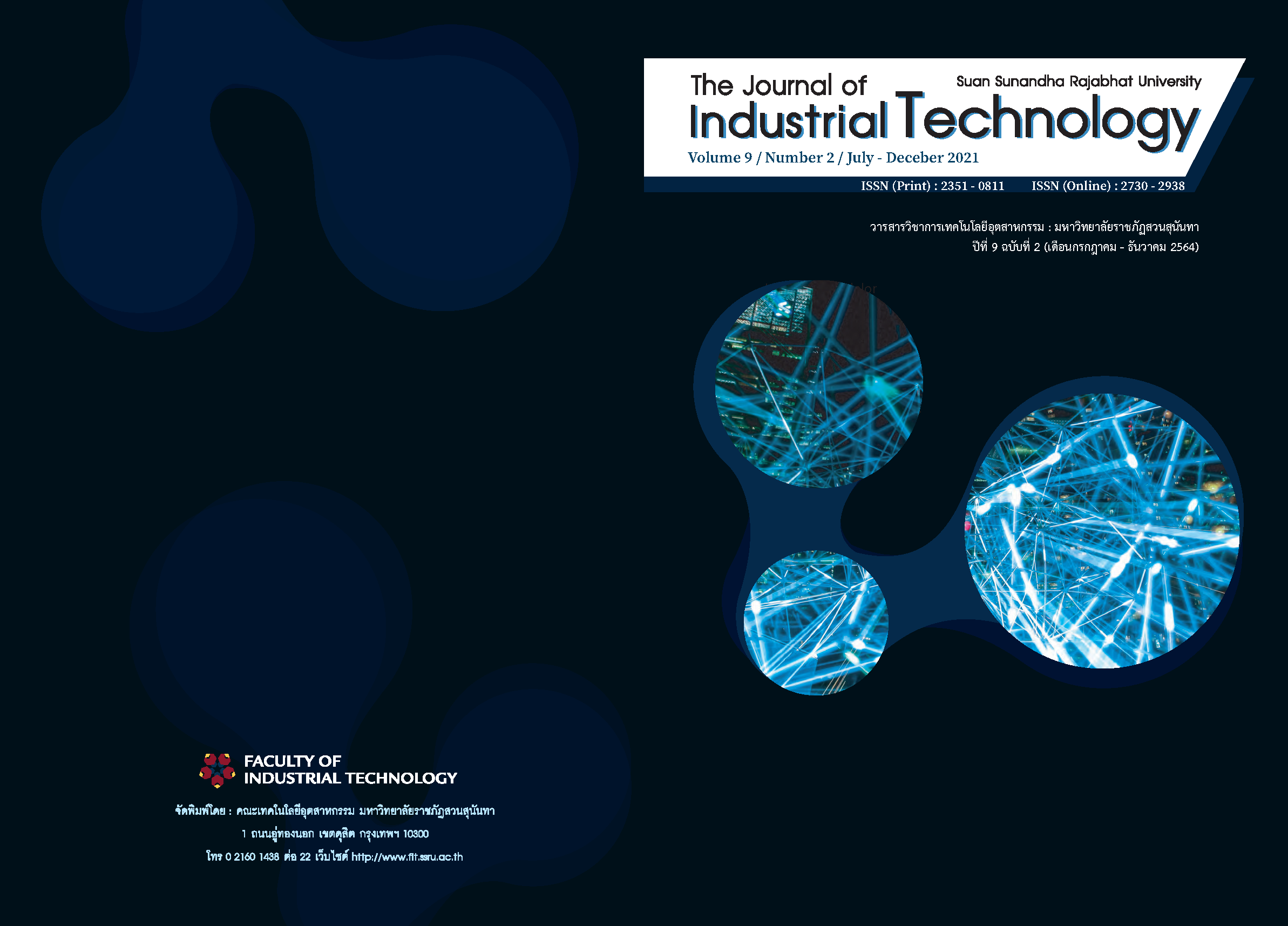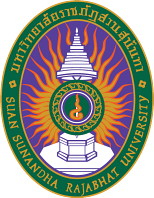Thermal performance of concrete tile ventilator equipped with PV-powered fan
Keywords:
Concrete tile ventilator, PV-powered fan, Thermal performance, Number of air change, Heat gainAbstract
This paper presents the thermal performance of a concrete tile ventilator equipped with PV-powered fan (CTVPVf). The CTVPVf is composed of a concrete tile ventilator, steel pipe, PV panel and DC fan. A DC fan is driven directly by a photovoltaic (PV) panel i.e. no battery is used. Two test houses of 8 m3 volume were utilized in experiments. First test house thatched the common flat concrete tile together with a CTVPVf located at the south-facing roof whereas a reference test house thatched common flat concrete tile only. The thermal performance of CTVPVf is expressed in terms of heat gain, temperature and the number of air change. Experimental results show that a CTVPVf can produce the number of air change up to 6-7 ACH, and provide indoor temperature nearly closed to ambient temperature. Moreover, the test house has a lower ceiling heat gain than a reference test house with the percentage heat gain reduction achieved higher than 40%.
References
S. Janjai, I. Masiri, S. Pattarapanitchai, and J. Laksanaboonsong, “Mapping global solar radiation from long-term satellite data in the tropic using an improved model,” International Journal of Photoenergy, Vol. 2013, ID: 210159, 2013.
J. Khedari, A. Sangprajak and J. Hirunlabh, “Thailand climatic zones,” Renewable Energy, Vol. 25,no. 2, pp. 267-280, February 2002.
J. Hirunlabh, W. Puangsombut, J. Waewsak and J. Khedari, “PV attic ventilation: a simple tool for reducing cooling load and providing comfort,” Interna-tional Journal of Ambient Energy, Vol. 23, no 3, pp. 159-168, Jul. 2002.
N. Nankongnab, W. Puangsom- but, S. Insiripong, J. Hirunlabh and U-C. Shin, “Field investigation on hygrothermal performance of full-vent perforated soffit and ceiling,” Solar Energy, Vol. 80, no. 80, pp. 936-948, August 2006.
W. Puangsombut, J. Hirunlabh, J. Khedari and U-C. Shin, “Field investigation on moisture reduction by perforated ceiling,” Sustainable Energy and Green Architecture (SEGA 2003), International Conference, Bangkok, 2003, pp. (GA213-219).
O. Amornleetrakul, W. Puang-sombut and J. Hirunlabh, “Field investigation of the small house with the ventilate roof tiles,” Advance Materials Research, Vols. 931-932, pp. 1233-1237, 2014.
K. Juengpimonyanon, W. Puang-sombut and T. Ananacha, “Field investigation on thermal performance of the tile ventilator,” Applied Mechanics and Materials, Vols. 619, pp. 73-77, 2014.
S. Phiraphat, R. Prommas and W. Puangsombut, “Experimen-tal study of natural convection in PV roof solar collector,” International Communications in Heat and Mass Transfer, Vol. 89,pp. 31-38, December 2017.
S. Phiraphat, R. Prommas, T. Tondee and W. Puangsombut, “Thermal performance of PV roof solar collector,” Sustainable Energy and Green Architecture (SEGA 2016), International Conference, Bangkok, 2016.
D. Nonthiworawong, “Design of a light-vent pipe (LVP) to reduce building cooling load”, Ph.D. Thesis (Sustainable Energy and Environment Technology and Management), Rajamangala University of Technology Rattanakosin, Nakhon Pathom, TH, 2017.
J. Khedari, C. Pongsatirat, W. Puangsombut and J. Hirunlabh, “Experimental performance of a partially-glazed Modified Trombe Wall,” International Journal of Ambient Energy, Vol. 26, no. 1, pp. 27-36, 2005.
W. Puangsombut, D. Nonthi- worawong and T. Lohapan- somboon, “Effect of moisture reduction on thermal comfort by solar chimney window with small ventilation fan,” The Journal of Industrial Technolo-gy, Vol. 8, no. 1, pp. 22-30, January-June 2020.
Downloads
Published
How to Cite
Issue
Section
License
บทความที่ได้รับการตีพิมพ์เป็นลิขสิทธิ์ของคณะเทคโนโลยีอุตสาหกรรม มหาวิทยาลัยราชภัฎสวนสุนันทา
ข้อความที่ปรากฏในบทความแต่ละเรื่องในวารสารวิชาการเล่มนี้เป็นความคิดเห็นส่วนตัวของผู้เขียนแต่ละท่านไม่เกี่ยวข้องกับมหาวิทยาลัยราชภัฎสวนสุนันทา และคณาจารย์ท่านอื่นๆในมหาวิทยาลัยฯ แต่อย่างใด ความรับผิดชอบองค์ประกอบทั้งหมดของบทความแต่ละเรื่องเป็นของผู้เขียนแต่ละท่าน หากมีความผิดพลาดใดๆ ผู้เขียนแต่ละท่านจะรับผิดชอบบทความของตนเองแต่ผู้เดียว








